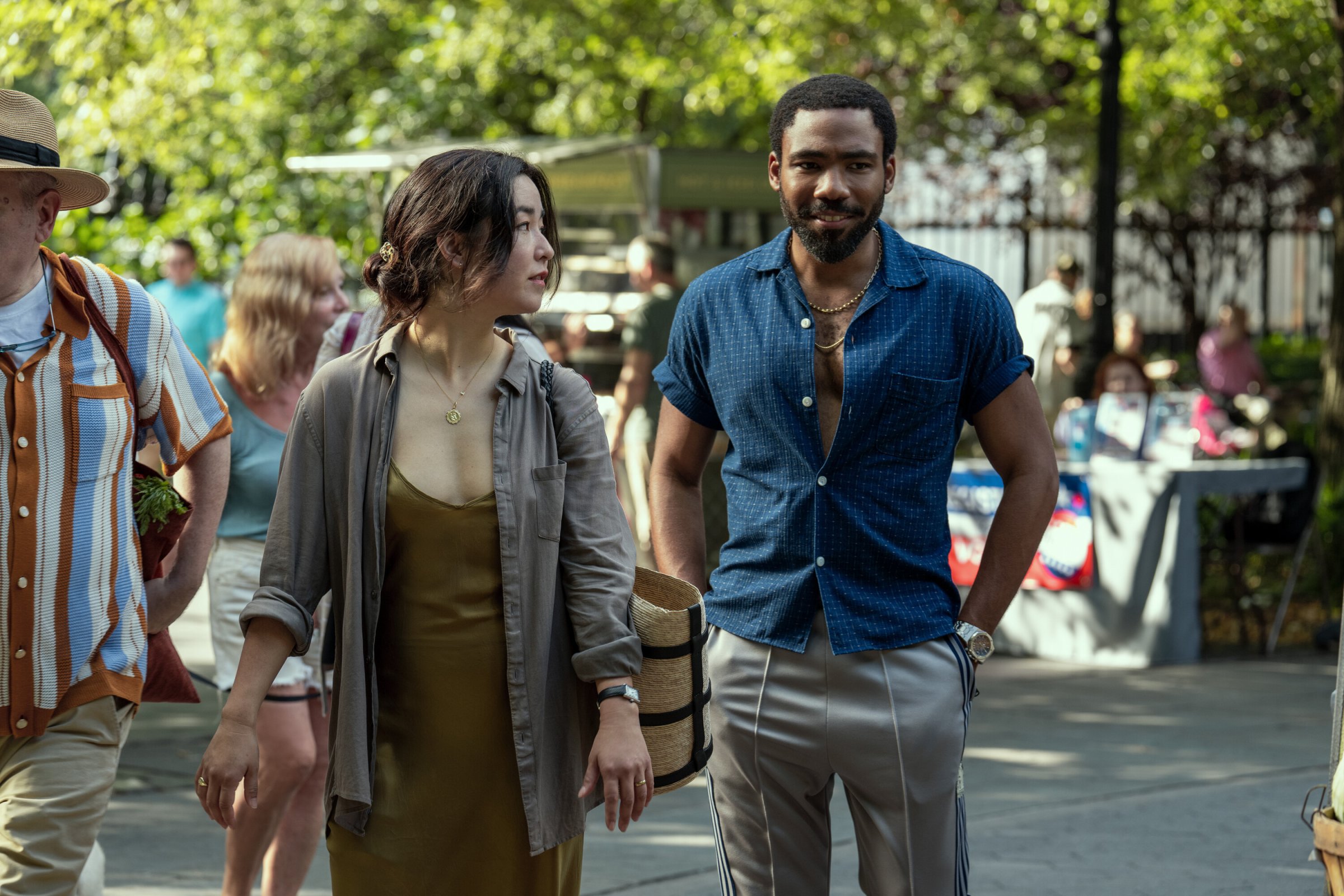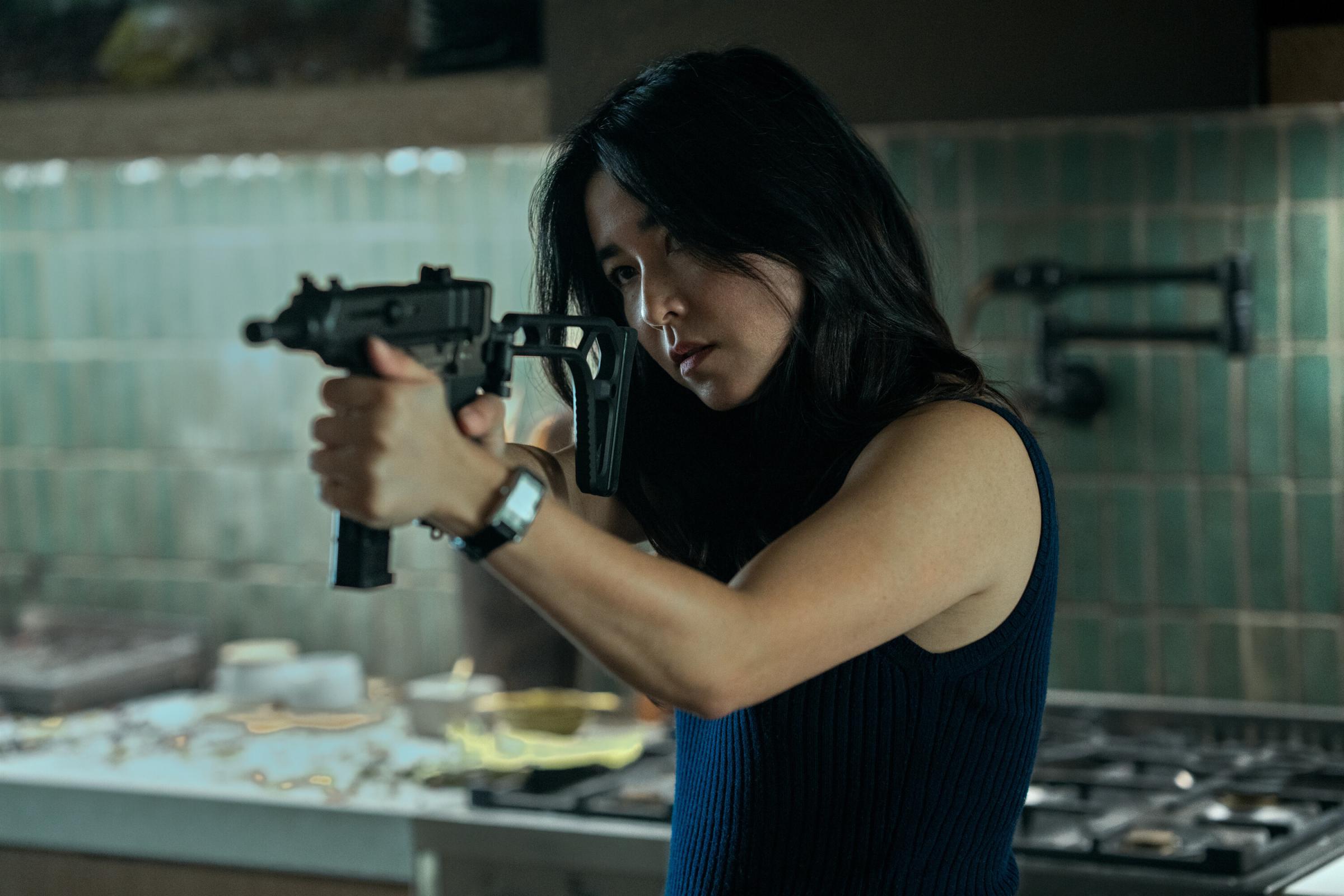
When it was first announced in 2021 that Donald Glover would be creating and starring in a TV version of Mr. & Mrs. Smith, the news was met with a high degree of skepticism. Would Glover and then collaborator Phoebe Waller-Bridge—originally set to co-write and co-star—be able to generate even a fraction of the white-hot chemistry that sustained the original movie? Doug Liman’s Mr. & Mrs. Smith, released in 2005, succeeded almost entirely because of the star power of Brad Pitt and Angelina Jolie, who fell in love during filming and ignited a firestorm of tabloid gossip the likes of which we’ve hardly seen since. Was it really a wise idea to churn out a bloated remake with prestige aspirations?
But with fellow Atlanta writer Francesca Sloane as showrunner and Pen-15’s Maya Erskine replacing Waller-Bridge as the new Mrs. Smith, the eight-episode Prime Video series, releasing Feb. 2, is a delightful surprise, mining the original movie for loose inspiration more than specific plot details. Here’s what to know about how the new Mr. & Mrs. Smith sets itself apart—and how it still manages to retain a few elements from the source material.
Read more: Mr. & Mrs. Smith Reveals a Sweeter Side of Donald Glover
The premise

Part of my own wariness going into the show came from the shift in premise, which is pretty significant. In the movie, John and Jane are two married operatives working at different contract-killing firms. If they knew that about each other from the beginning, they’d probably have a lot more to talk about—but John thinks his wife is a tech support consultant, while Jane thinks her husband is a construction executive. They’re trapped in a stultifying, mundane suburban existence, and marriage counseling doesn’t seem to be helping. That’s when they’re each assigned to kill the other, changing everything.
If there’s one element of the movie that really works, outside of its stars, it’s that simple hook. There’s a lot of comedy and drama baked in: it’s fun to see John and Jane react to the mind-blowing revelations of who they’re married to, struggling to balance their professional duties with personal feelings. In the new version, though, they start the series as partners—spies hired by a mysterious company and newly paired up to pose as a married couple, a la Philip and Elizabeth Jennings from The Americans. The movie’s core central tension is missing, even if these Smiths keep plenty of secrets from each other, too.
The characters and themes

Almost a month before the series dropped, Sloane wrote an open letter acknowledging the on-its-face absurdity of bringing back Mr. & Mrs. Smith, of all IP. Already experiencing pushback from viewers unimpressed by another seemingly unnecessary reboot, she touched on some of the questions her new take would tackle: “What would a series feel like if our heroes weren’t the two most beautiful people on the planet, but instead, were two lonely people, two underdogs, wanting more from life than what they currently had? What if our John and Jane could be anyone, could be you and me? … What would an action show feel like if we considered all of the ‘in-between-moments’ rather than the other way around?”
So the new version is a spy-movie subversion, in many ways, delivering the usual thrills in various exotic locales (in addition to New York City, where the movie is also set) while treating its amateur spies as, well, amateurs. In Pitt and Jolie’s hands, John and Jane were perfect specimens, but Glover and Erskine’s versions of the characters are far less confident and far more relatable. The new John and Jane don’t have the same lethal chemistry as Pitt and Jolie—who does?—but their easy familiarity and naturalistic dialogue make them feel wholly believable as a couple, especially as the series goes on.
The plot and structure

Plot-wise, the movie is a little convoluted, especially when it comes to the assassin overlords who eventually attempt to terminate John and Jane when they become too much of a liability. In the series, we do meet other Smiths, including one couple played by Alexander Skarsgård and Eiza González who only appear in the show’s opening scene. And the spy overlords here seem just as ruthless and untrustworthy as the ones from the movie; after all, that intro establishes how dangerous it is to flee “the company” and strike out on your own with your partner. It’s evident very early on that the Smiths might eventually have to face off against their faceless employers.
Still, the focus in the show is more on character than plot. The clever mission-of-the-week structure allows each episode to craft a creative espionage-fueled twist on a classic relationship story; in one episode, for example, transporting a petulant high-value target (Ron Perlman) leads John and Jane to discuss the possibility of starting a family. The larger mysteries of the show are subservient to the arc of the central relationship.
The tone

The 2005 film might be far from a masterpiece, but it’s goofy fun, striking a consistently light, playful tone through each set piece. The show is less gleefully amoral, in some ways; at least our John and Jane don’t have to kill people for every assignment. But it’s also much more serious overall, and the comedy (still pretty consistent throughout) often derives from a cruder or more disturbing place. The violence is far more intense; there’s a somewhat graphic death right in the opening scene that immediately sets the tone, warning us we’re in for something very different from what we may be expecting. Yet it might be the emotional violence that leaves the biggest mark; especially later in the show, the show frequently goes surprisingly deep in questioning whether our Mr. and Mrs. Smith really should be together.
The series does leave room for some welcome references to the original, especially later on, while still preserving the new tonal shift. One episode, directed by the great Amy Seimetz (The Girlfriend Experience, Atlanta), devotes an entire hour to a series of couples therapy sessions, like the ones that bookend the movie, and contains one of the ugliest confrontations of the show. And toward the end, one shootout almost wrecks a house, like the centerpiece fight of the original—but here, the stakes feel much higher, because we’ve spent so much time with these characters. There’s no guaranteed happy ending.
More Must-Reads From TIME
- The 100 Most Influential People of 2024
- How Far Trump Would Go
- Scenes From Pro-Palestinian Encampments Across U.S. Universities
- Saving Seconds Is Better Than Hours
- Why Your Breakfast Should Start with a Vegetable
- 6 Compliments That Land Every Time
- Welcome to the Golden Age of Ryan Gosling
- Want Weekly Recs on What to Watch, Read, and More? Sign Up for Worth Your Time
Contact us at letters@time.com